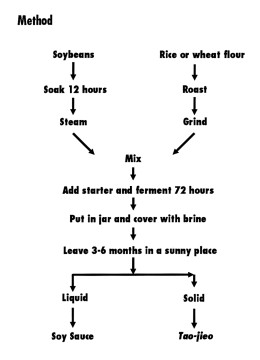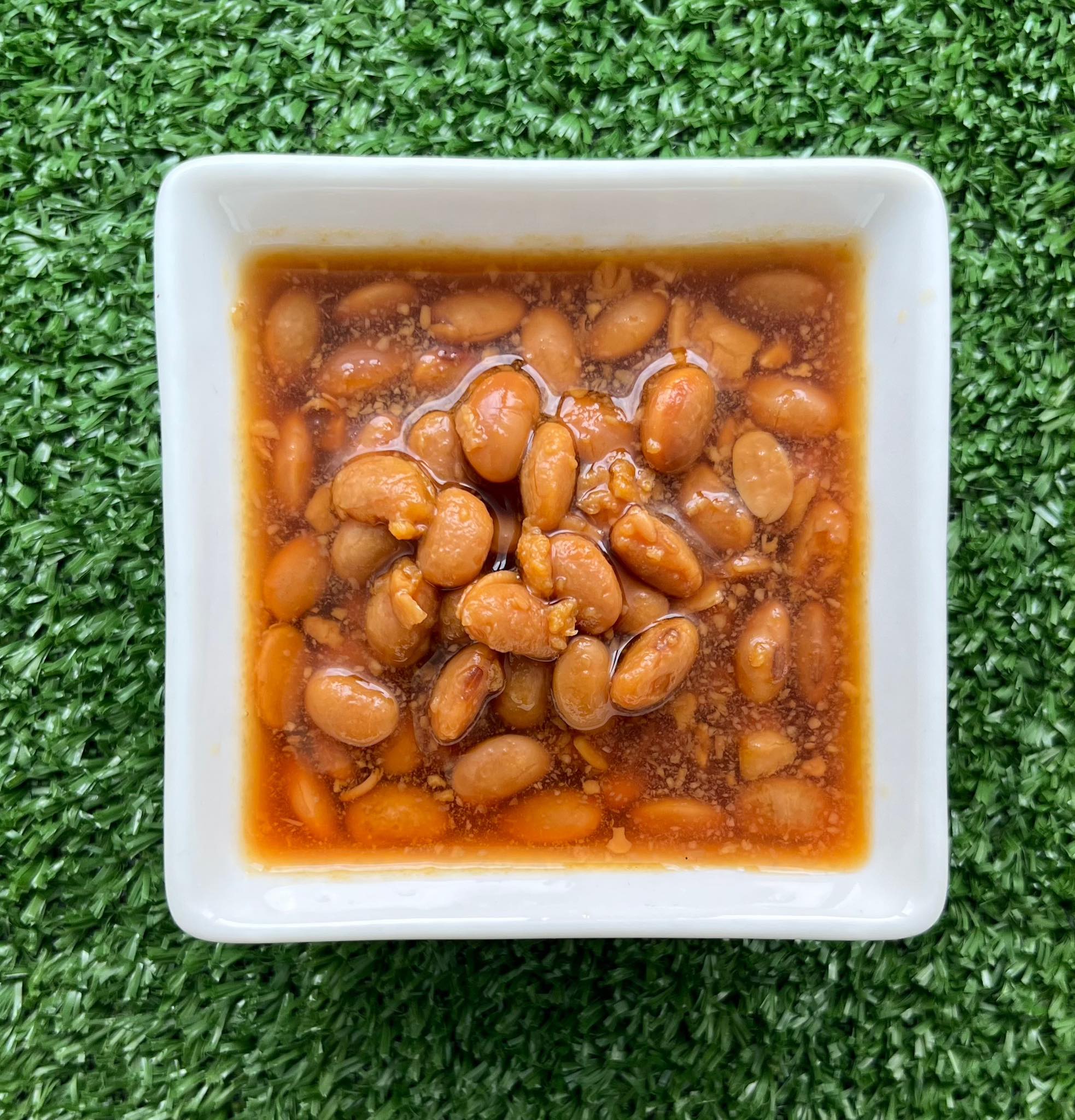Skip to main content
- Name (Thai)
-
เต้าเจี้ยว
- Name (English)
-
Fermented soybean paste
- Local name
-
Tao-jiew
- Product
-
Soybean
- Ingredients
-
Soybean: Glycine max (Tooa-leuang). Wheat flour or rice flour, salt, starter mould (Aspergillus oryzae).
- Fermentation
-
3-6 months.
- Storage life
-
Many years.
- Microorganisms
-
- Properties
-
Semi-solid, light brown to dark brown, salty taste, characteristic flavour.
- Method
-
1. Wash whole soybean and soak for 12 hours. Steam until soft.
2. Roast and grind equal amount of wheat flour or rice flour to the whole soybean. Mix with the cooked soybean thoroughly on a bamboo tray and add starter of Aspergillus oryzae (grown on cooked rice) and leave for about 72 hours. The product obtained at this stage is called "Koji"
3. Put the Koji in an earthenware jar, cover with 20% brine and cover the jar. Leave the jar in a sunny place for 3-6 months to ferment.
4. Separate the liquid off; this is processed further for production of soy sauce. Pack the solid part, which is Tao-jieo, in clean jar or bottle and pasteurize it. It can be kept for many years, but the flavour is better if consumed within one year.
- Production
-
In medium scale industry.
- Consumption
-
It is used as an ingredient in many dishes, such as Tao-jieo-lon, and eaten as a side dish with rice.




